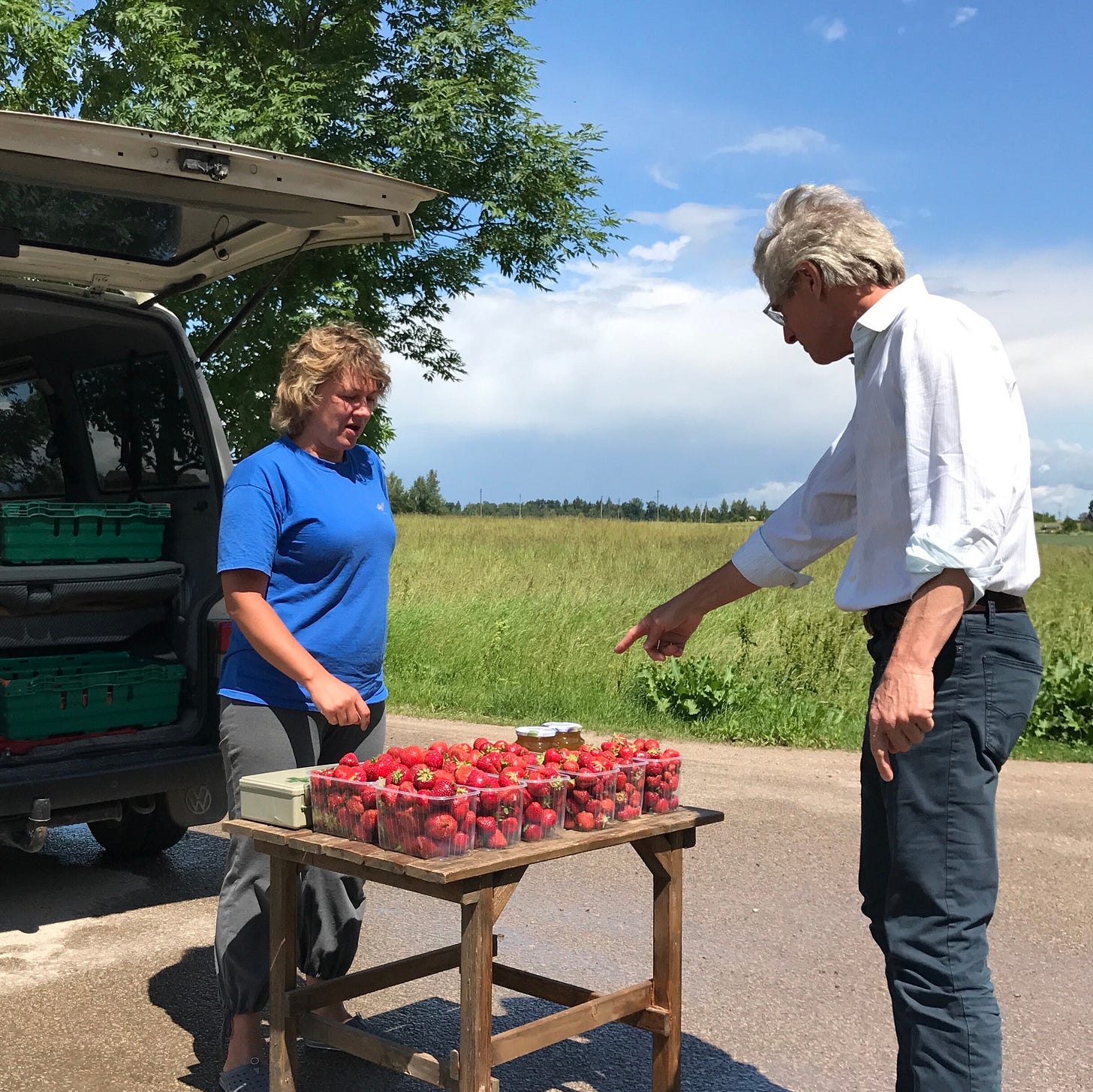The Art of Eating
Is about the Best Food and Wine.
The Art of Eating is about the best food and wine — what they are, how they are produced, and where to find them. I began a long time ago by writing a slim black-and-white printed newsletter, which grew into a print magazine and eventually became an online magazine. Now on Substack, I’m back to the essentials, the things I enjoy most — researching, interviewing, tasting, seeing for myself, and writing. Once again, I’m the primary writer.
I care most of all about taste and the connection of taste to place. I look for the essence, the origin, the classic, the prime example. (France and Italy remain my anchors. I’ve written several books including 50 Foods, The Art of Eating Cookbook, and The Food & Wine of France. Yet to come is Italy.) Raw materials are key. Before I ever knew much about cooking or thought to write about it, I began to grow some of my own vegetables and herbs.
As much as I respect facts and science, The Art of Eating is often happily anachronistic. Much of the best food and drink came into being in pre-industrial days, when people lived closer to nature and found more of their daily pleasure in eating. But we live in the present; our sensibilities and our food inevitably reflect that. What’s important is to be delicious.
The recipes are often classic or traditional but with everything taken apart and reconsidered (and sometimes put back in the same place). Metric measurements come first because they’re easier and outside the US they’re all that most readers know. Specifically about baking, there’s no baking soda or powder, because I don’t like soft cakes and there are older, better ways of leavening — air (via eggs) and yeast (think brioche or sourdough buckwheat cakes). I admire simplicity, but certain recipes, such as James MacGuire’s for quenelles or fromage de tête, are elaborate records of how things “ought” be made in order to taste their best.
The writing in The Art of Eating takes time and resources, and it exists only because of your support. Please consider becoming a paid subscriber. Paid subscribers receive a new article approximately once a week along with access to the archive of hundreds of recipes, past articles, and the Cheese Anthology. It’s a lot of top-quality information, writing that digs in. Free subscribers receive previews of articles and occasional complete articles.
Best,
Ed Behr
Stay Up-to-Date
Subscribe and you won’t have to worry about missing anything. Every new post goes directly to your inbox. You can also install the Substack app to read them there:
Note
If you subscribe and don’t receive posts, please check your spam folder and add artofeating.substack.com to your email safe list.





